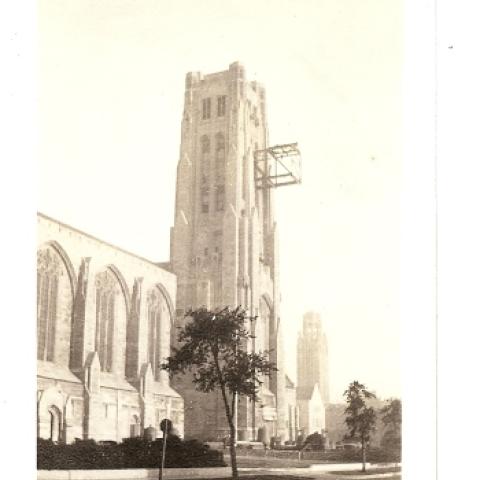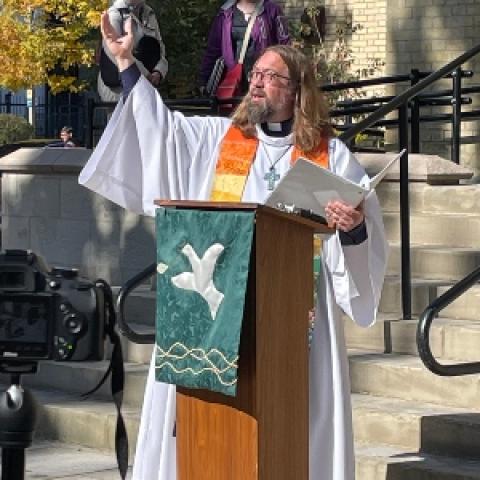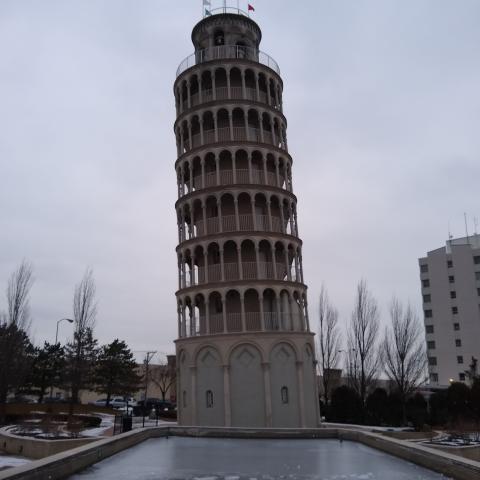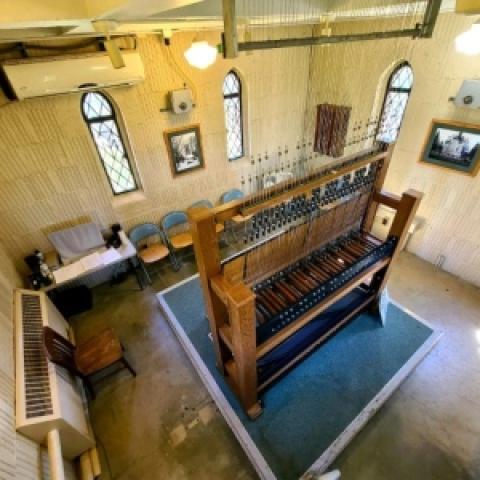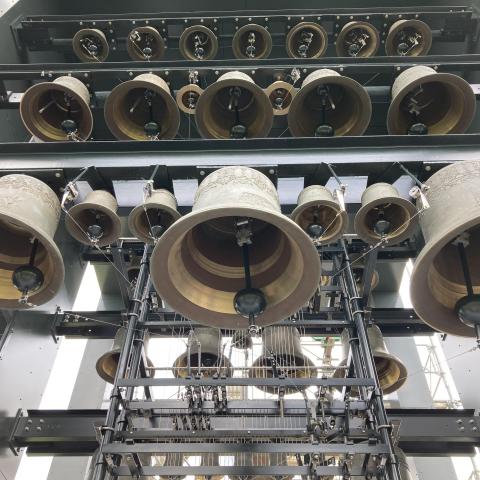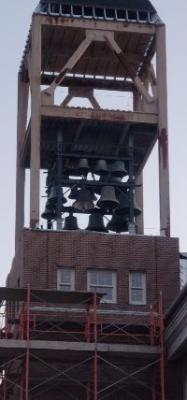
B. M. C. Durfee High School, Fall River, Massachusetts
The newly refurbished 23-bell instrument of B. M. C. Durfee High School in Fall River, Massachusetts, is distinguished by its status as the only carillon in a public high school in the United States. The instrument began in 1886 as a ten-bell chime cast by Meneely of Watervliet, New York, for the Durfee High School. The chime was dedicated a year later to the memory of Bradford Matthew Chaloner Durfee, the only child of Bradford and Mary Brayton Durfee, local residents.
For decades, the bells tolled 29 times every morning to commemorate every year of Chaloner’s life. The bells were removed from the old school tower in 1978, when a new school was built; the original school was later re-purposed as a state courthouse in the 1990s.
The bells needed an extra boost to be reinstalled on the new school grounds. The late Les Cory, Durfee alumnus, formed the Durfee Bells Preservation Society, Inc., and the organization successfully raised all the funds in order to mount the bells again in a free-standing tower on the new school grounds. Another alumnus who was pivotal in the effort to remount the bells was Janice Curry, to whom the clocks in the tower were dedicated.
When the chime was rededicated in 2014, five bells were added to form a 14-bell instrument. Four of the new bells were newly cast, and one of them was a replacement, since one of the original ten bells had been stolen in the late 1990s. Meeks, Watson & Co. of Georgetown, Ohio, did this work. One of the added bells was an older one repurposed for this chime, a McShane of Baltimore bell from 1898 that fit in well with the existing set. Meeks, Watson & Co. had searched the country for a bell similar to the original Meneely of Watervliet bell and chanced upon this one in Tennessee. In addition to casting four new bells and finding a replacement bell, Meeks, Watson & Co. retuned the original nine remaining bells.
Only four years later, the bells had to come down again. The school was torn down to make room for a new, larger school. This time, B. A. Sunderlin Bellfoundry of Sunder Glen, Virginia, was contracted to handle the expansion and reinstallation project. The new school has an integral tower in its design where the bells will hang and ring out daily. Sunderlin cast nine new bells for a total of 23, just surpassing the numerical threshold to constitute a carillon. The bells play automatically via computerized electromagnetic hammers and manually via a traditional baton keyboard.
All photos credit B. A. Sunderlin Bellfoundry

